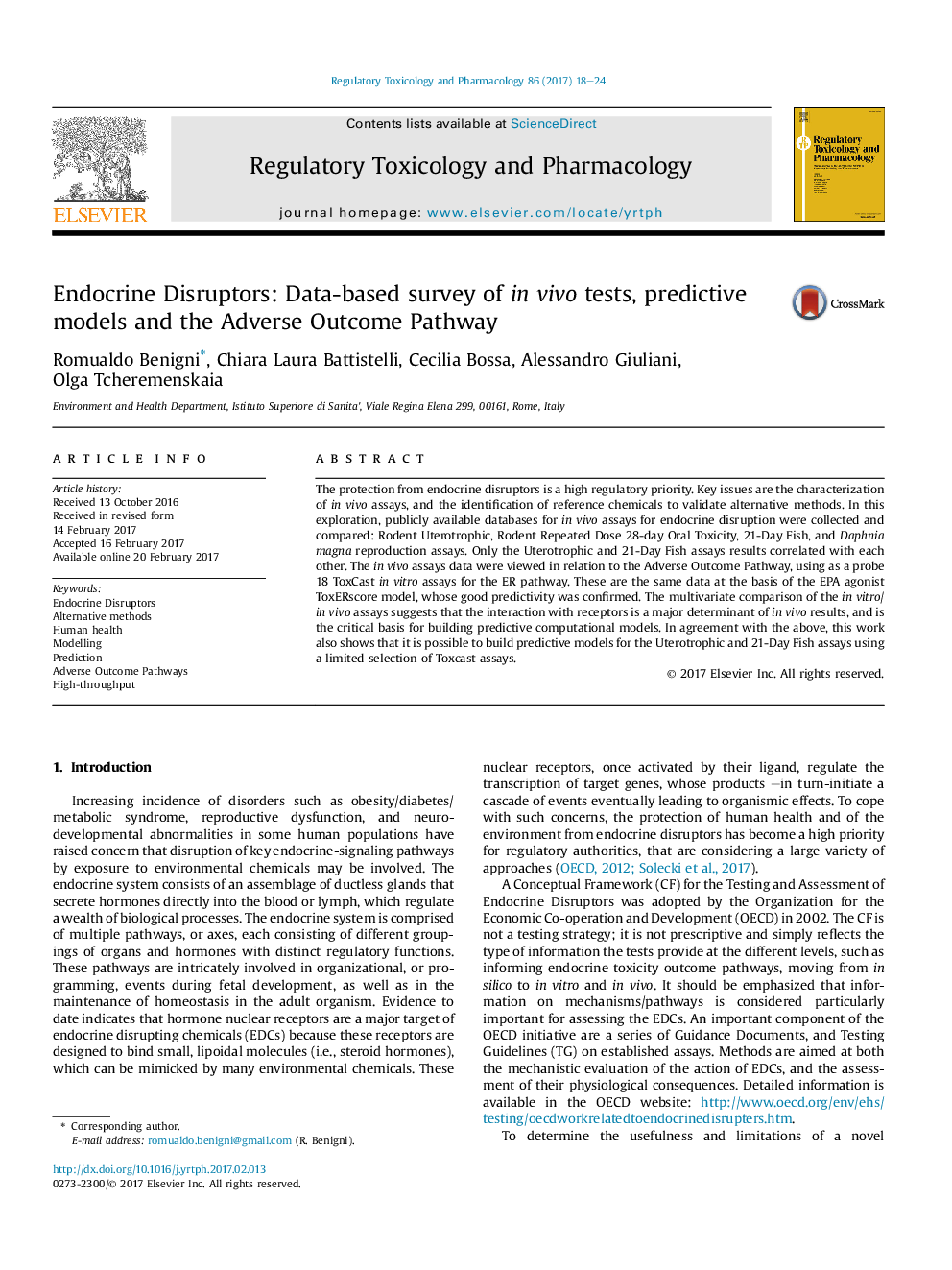| Article ID | Journal | Published Year | Pages | File Type |
|---|---|---|---|---|
| 5561247 | Regulatory Toxicology and Pharmacology | 2017 | 7 Pages |
â¢Data from OECD-recommended in vivo assays for Endocrine Disruptors were compared.â¢Only the Uterotrophic and 21-Day Fish assays results correlated with each other.â¢Interaction with receptors is a major determinant of the Uterotrophic and 21-Day Fish results.â¢Predictive models can be built with a limited selection of HTS assays for receptor interaction.
The protection from endocrine disruptors is a high regulatory priority. Key issues are the characterization of in vivo assays, and the identification of reference chemicals to validate alternative methods. In this exploration, publicly available databases for in vivo assays for endocrine disruption were collected and compared: Rodent Uterotrophic, Rodent Repeated Dose 28-day Oral Toxicity, 21-Day Fish, and Daphnia magna reproduction assays. Only the Uterotrophic and 21-Day Fish assays results correlated with each other. The in vivo assays data were viewed in relation to the Adverse Outcome Pathway, using as a probe 18 ToxCast in vitro assays for the ER pathway. These are the same data at the basis of the EPA agonist ToxERscore model, whose good predictivity was confirmed. The multivariate comparison of the in vitro/in vivo assays suggests that the interaction with receptors is a major determinant of in vivo results, and is the critical basis for building predictive computational models. In agreement with the above, this work also shows that it is possible to build predictive models for the Uterotrophic and 21-Day Fish assays using a limited selection of Toxcast assays.
